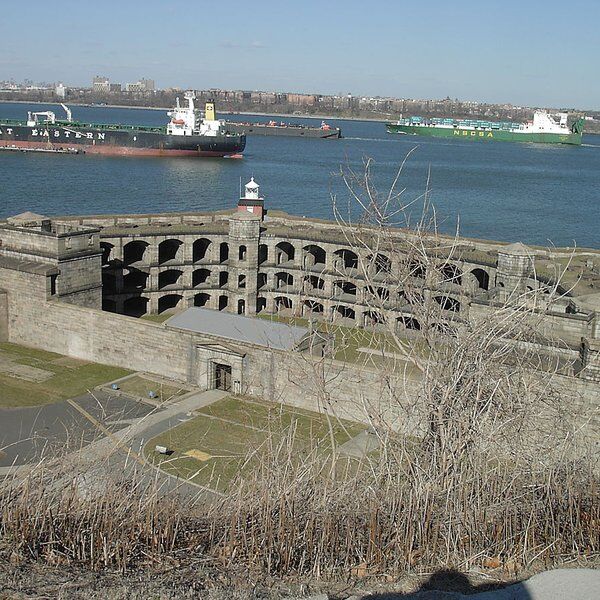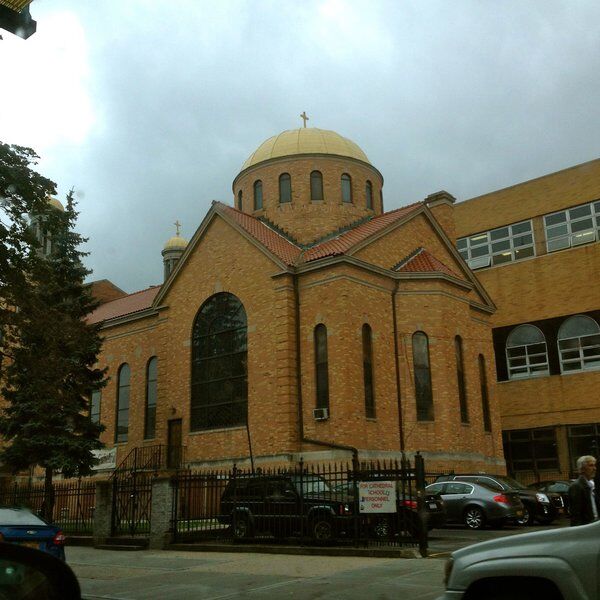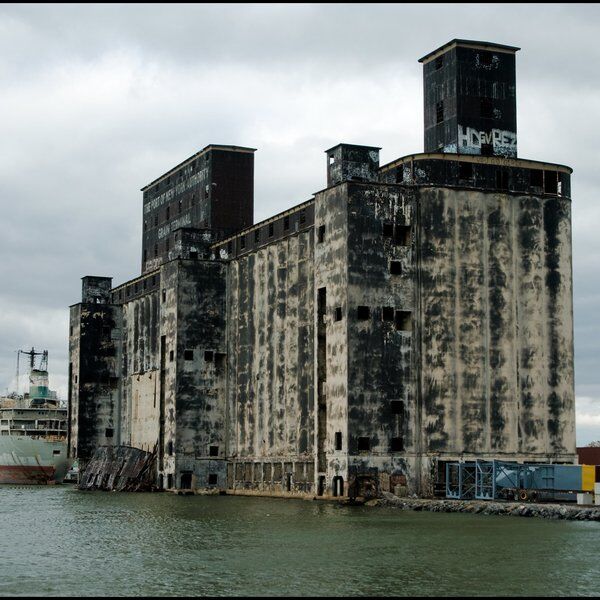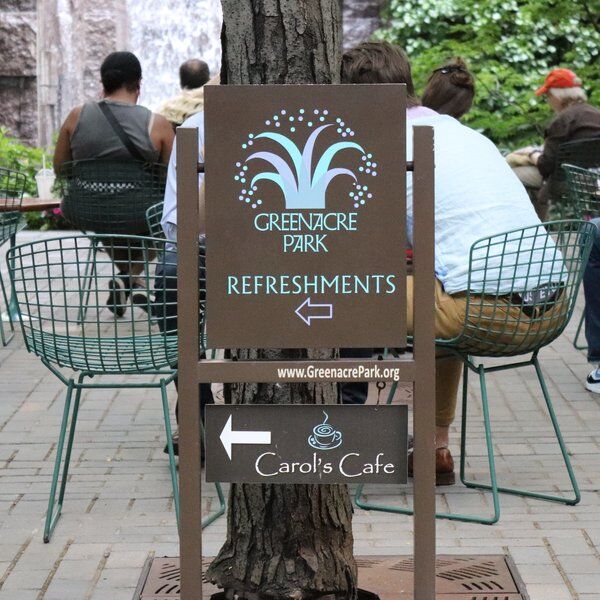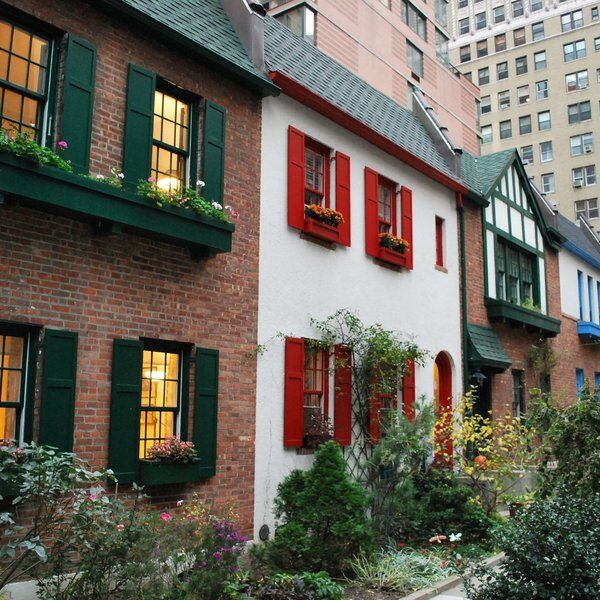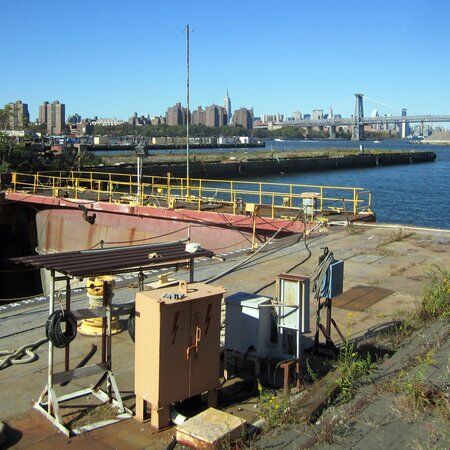
Exploring the Brooklyn Navy Yard, NYC
The Brooklyn Navy Yard, formerly the New York Navy Yard, is a unique community of over 500 businesses spread across 300 acres. Dating back to the early 1800s, it has a long and varied history, having evolved from a naval shipyard into a dynamic industrial park. The significance of its history has earned it a listing on the National Register of Historic Places since 2014. Quarters A, the commander's quarters, holds the distinction of being a National Historic Landmark, while structures like Dry Dock 1 and the Navy Yard Hospital Building are designated landmarks within New York City.
Today, managed by the non-profit Brooklyn Navy Yard Development Corporation (BNYDC), it contributes over $2.5 billion annually to the city’s economy and provides more than 11,000 jobs.
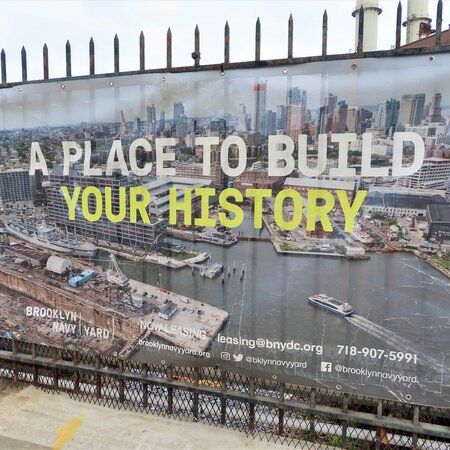
Brooklyn Navy Yard’s Origin Story
The history of the Brooklyn Navy Yard traces back to the early 17th century when the area was a mudflat and tidal marsh inhabited by the Canarsie Indians. Dutch colonisation began in the area, when Joris Jansen Rapelje purchased land around present-day Wallabout Bay in 1637. The land, initially a farm, came to be known as "Waal-boght" or "Walloon's Bay" after Rapelje, a Walloon from Belgium.

During the American Revolutionary War, the bay was occupied by British prison ships, where thousands of American prisoners perished. Shipbuilder John Jackson acquired parts of the Rapelje estate in 1781, initiating the development of Wallabout and a shipbuilding facility on the site.
In 1801, the federal government purchased the land for $40,000, envisioning it as a naval yard due to its strategic location near Lower Manhattan and New York Harbor. The Brooklyn Navy Yard became active in 1806, though initial development was gradual. The yard's first commandant, Jonathan Thorn, oversaw its early operations, and the federal-style commandant's house, Quarters A, was constructed around this time.
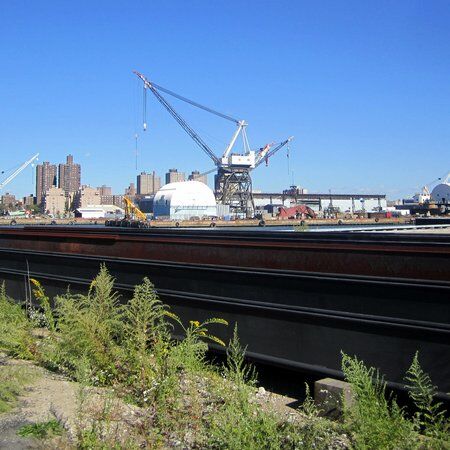
Initial Operations at the Yard
The first ship built at the Brooklyn Navy Yard was the USS Ohio, whose construction began in 1817. This marked the beginning of shipbuilding activities at the yard. The USS Fulton, initially designed as a steam frigate by Robert Fulton, served as the yard's first receiving ship before being destroyed in an explosion in 1829.
By the 1820s, the Navy Yard had several buildings among which the Brooklyn Naval Hospital built in 1824 was an important feature. During the Great Fire of New York in 1835 and the fire in Lower Manhattan in 1845, firefighting efforts from the Navy Yard were crucial.
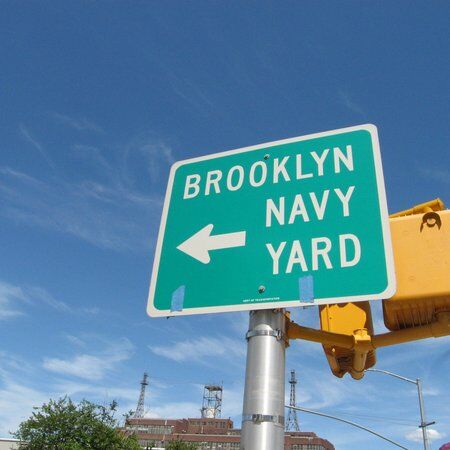
Brooklyn Navy Yard During the Civil War
As the United States teetered on the brink of Civil War in the 1860s, Brooklyn became one of the nation's largest cities, brimming with European immigrants. The Brooklyn Navy Yard, with thousands of skilled workers, found itself at the heart of industrial expansion. By 1861, it boasted a workforce of 3,700, reaching 6,200 by 1865.
Throughout the war the Yard manufactured 14 large ships and made adjustments on over 400 commercial ships to support the Union's naval blockade against the Confederacy.
Post-Civil War
The end of the Civil War saw Brooklyn Navy Yard’s luck run out as production slowed and the workforce declined. Between 1866 and 1872, no new constructions commenced.
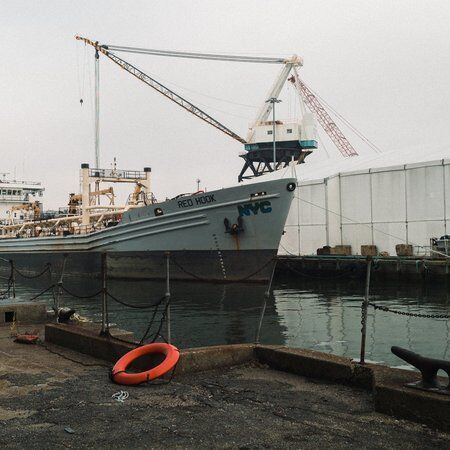
Early 20th-century Expansion
After the annexation of Brooklyn to New York City in 1898, rapid development and immigration ensued. Accessibility was enhanced with the construction of key infrastructure like the Williamsburg and Manhattan Bridges. The surge in immigration, increased the labour force, which also featured more women. Despite proposals to relocate or shut down the Navy Yard persisted.
Following the Spanish–American War in 1898, President Theodore Roosevelt initiated a naval expansion, commissioning ships like the USS Connecticut at the Brooklyn Navy Yard. This marked the beginning of a significant era of shipbuilding, necessitating expansion within the yard and the building of infrastructure like Building Way 1 and 2.
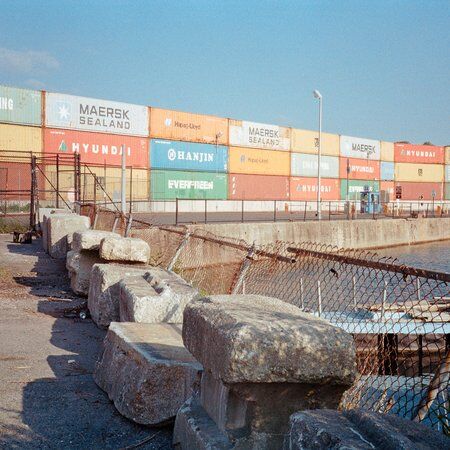
During the World Wars
World War I
With the outbreak of World War I, the Brooklyn Navy Yard became a valuable means of ship construction once more, launching vessels such as USS New York and USS Arizona. The war effort prompted investment and construction, reinforcing the yard's role in national defence.
Following World War I, the Yard faced challenges as naval treaties limited battleship construction. In the shadow of the Great Depression as well, workers were made redundant and construction projects were halted.
World War II
Once more the Yard became a crucial site for battleship construction, producing the USS North Carolina, USS Iowa, and USS Missouri. It won awards and praise for its efforts. However, as was the pattern, after the war the Yard faced more challenges such as industrial decline and a dwindling workforce.
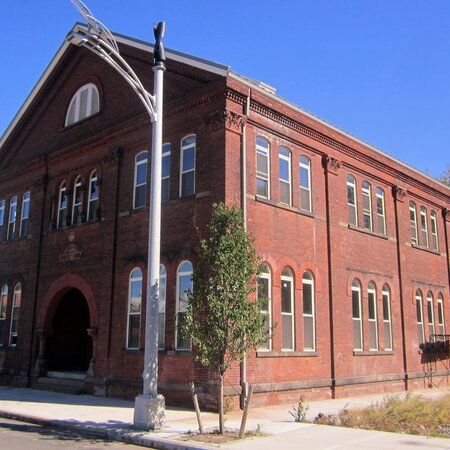
The Brooklyn Navy Yard's Closure
In May 1964, Secretary of Defense Robert S. McNamara – after conducting an evaluation of outdated military facilities – made an announcement that the New York Naval Shipyard might be closed. This triggered protests among the workers. Despite efforts to save the shipyard, the closure was confirmed in January 1965, with thousands of people being laid off from June 1966.
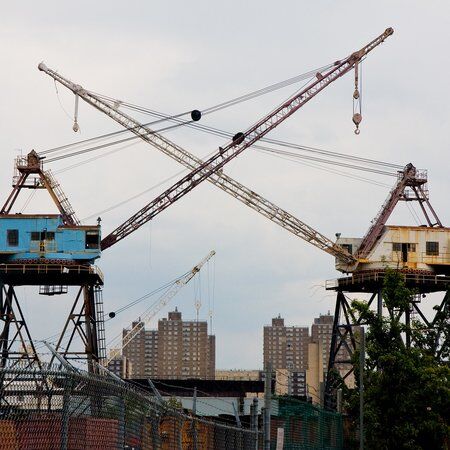
Owned by the City
Following the closure, the city purchased the Yard in 1969 and established the Commerce Labor Industry Corporation of Kings (CLICK) to oversee operations. Tenants began to sign leases and take up residency in the Yard almost as soon as the purchase was made.
Seatrain Shipbuilding became a prominent tenant, employing thousands of workers and launching the largest ships ever built at the yard. However, accusations of corruption and mismanagement led to strikes, economic challenges, and another decline in employment.
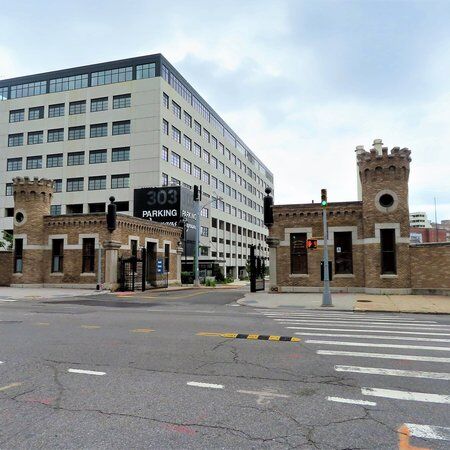
Future Projects
From 2017, the Brooklyn Navy Yard began undergoing some of its most significant expansion since World War II, with numerous development projects underway. With the opening of Building 77, Dock 72, and other initiatives, employment at the Yard had doubled by 2020.
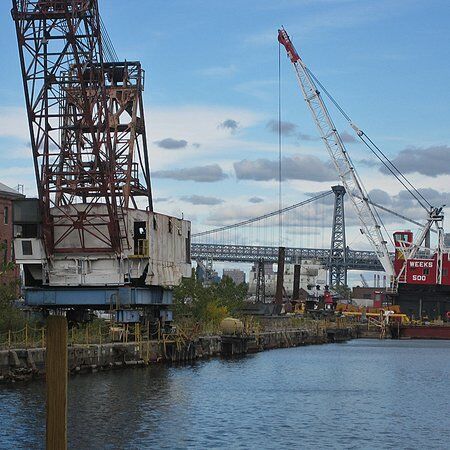
The Brooklyn Navy Yard’s Many Buildings
Today, the Brooklyn Navy Yard has a diverse array of historic buildings and structures that have been lovingly preserved and repurposed. From imposing dry docks to soaring industrial warehouses, each building (and there are many!) offers a glimpse into the Yard's past.
Key features include:
- Brooklyn Naval Hospital
- Brooklyn Navy Yard Center (Building 92)
- Dry docks
- Timber shed (Building 16)
- Sands Street Gate
- Supply Storehouse
- The Commandant's House (Quarters A).
- Building 1
- Building 5
- Building 77
- Building 41
- Green Manufacturing Center (Building 128)
- Building 132
- Building 280
- Building 293
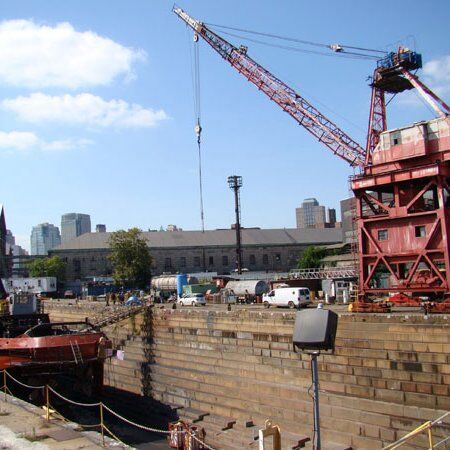
Discover More of New York with CityDays
Discover New York’s secret sites and noteworthy nooks by playing one of our New York treasure and scavenger hunts, escape room games or walking tours.
You’ll find curated trails and hunts all over New York, including Manhattan, Chelsea, Midtown and Chinatown.
All you have to do is team up with your friends, family or whoever to solve riddles, complete challenges and answer trivia to lead you on an unforgettable journey around New York’s most intriguing streets.
The best part? We’ll recommend top-rated bars, cafés and restaurants and give your team the chance to earn rewards by competing on our leaderboard.
CityDays gives you total freedom to start and finish whenever you like, take extra breaks if you want or need them, and it’s suitable for people of all ages.
You’re also guaranteed your money back if you don’t have an amazing time - although our previous reviews speak for themselves: we’re rated 5/5 on TripAdvisor and 4.95/5 on Google Reviews!













